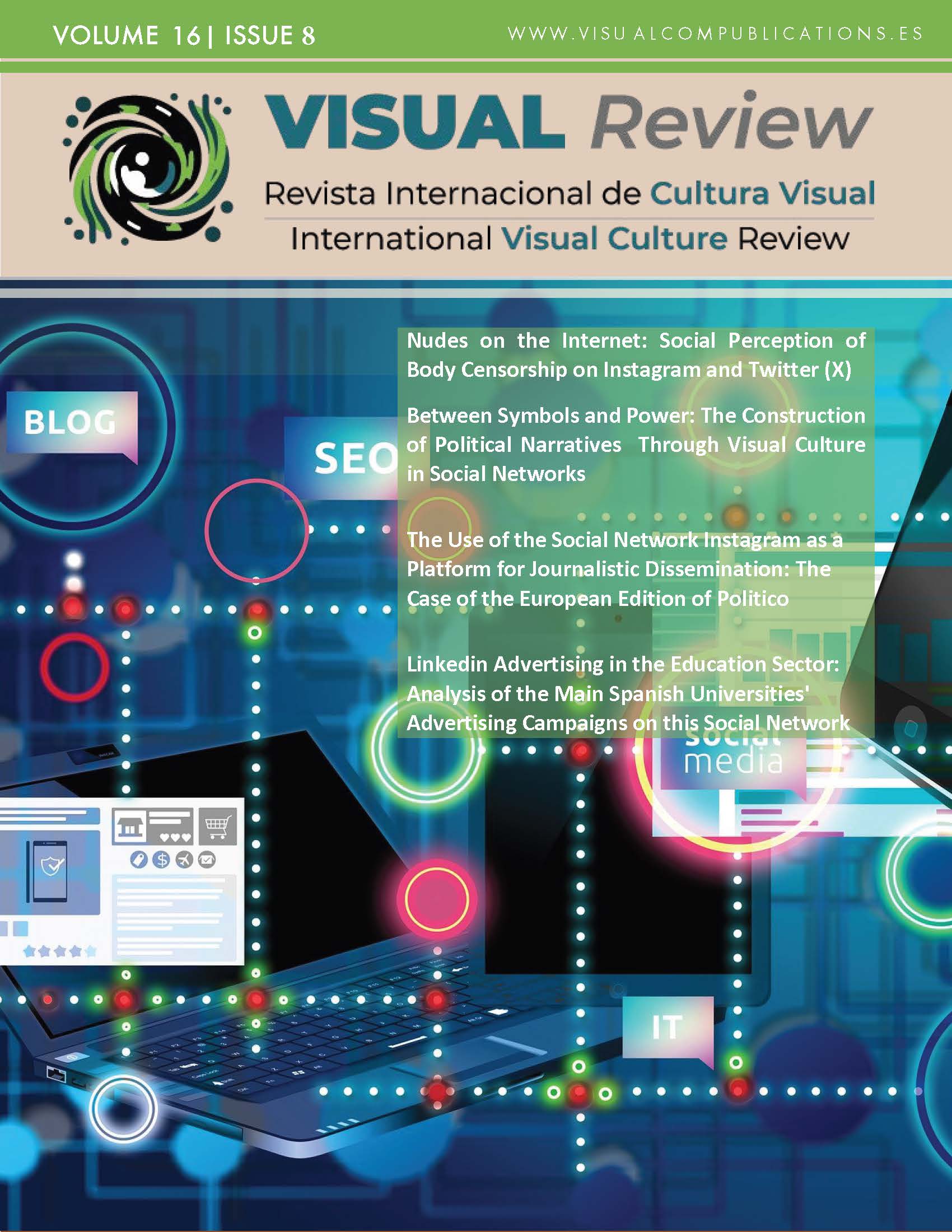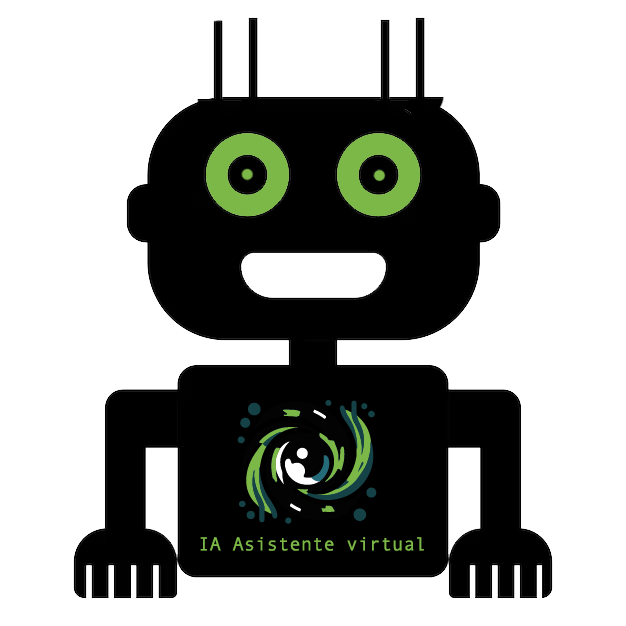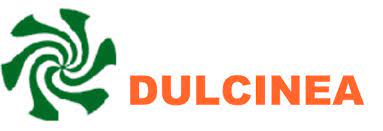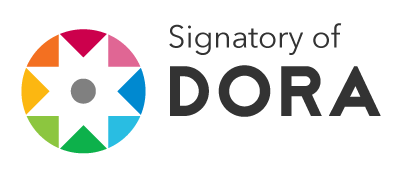Audiovisual Resources in Improving the Academic Performance of Engineering Students
DOI:
https://doi.org/10.62161/revvisual.v16.5671Keywords:
Audiovisual distribution, Audiovisual learning, Learning process, Instant messaging, Mobile devices, Hybrid laboratoryAbstract
This article analyzes audiovisual resources to improve learning and grades of engineering students. For this purpose, the flipped class methodology has been applied in the laboratory of the Hydraulic Works subject of three educational institutions with different geopolitical environments. The approach reveals that the experimental group presents an improvement in the acquisition of competences, satisfaction and exam grade compared to the students of the control group. It is concluded that the audiovisual resources promote greater skill and confidence in students, which has a positive impact on academic performance.
Downloads
Global Statistics ℹ️
|
658
Views
|
552
Downloads
|
|
1210
Total
|
|
References
Cabi, E. (2018). The Impact of the Flipped Classroom Model on Students’ Academic Achievement. The International Review of Research in Open and Distributed Learning, 19(3), 202–221. https://doi.org/10.19173/IRRODL.V19I3.3482 DOI: https://doi.org/10.19173/irrodl.v19i3.3482
Campillo-Ferrer, J. M., & Miralles-Martínez, P. (2021). Effectiveness of the flipped classroom model on students’ self-reported motivation and learning during the COVID-19 pandemic. Humanities and Social Sciences Communications 2021 8:1, 8(1), 1–9. https://doi.org/10.1057/s41599-021-00860-4 DOI: https://doi.org/10.1057/s41599-021-00860-4
Caramutti De La Piedra, R. D. P., & Ibáñez, D. B. (2022). University graduates in Peru: sociocultural implications in their research to graduate. University graduates and graduation research. VISUAL Review. International Visual Culture Review / Revista Internacional de Cultura , 9. https://doi.org/10.37467/revvisual.v9.3738 DOI: https://doi.org/10.37467/revvisual.v9.3738
Cartes-Barroso, M. J. (2022). Audiovisual journalism and technological innovation. The QR codes on Spanish television. VISUAL Review. International Visual Culture Review / Revista Internacional de Cultura , 9. https://doi.org/10.37467/revvisual.v9.3687 DOI: https://doi.org/10.37467/revvisual.v9.3687
Dehghan, S., Horan, E. M., & Frome, G. (2022). Investigating the Impact of the Flipped Classroom on Student Learning and Enjoyment in an Organic Chemistry Course. Journal of Chemical Education, 99(7), 2512–2519. https://doi.org/10.1021/ACS.JCHEMED.1C01104/ASSET/IMAGES/MEDIUM/ED1C01104_0002.GIF DOI: https://doi.org/10.1021/acs.jchemed.1c01104
De La Torre, V. M., & Díaz-Luc, A. (2023). Application of the methodology based on projects in university teaching. Case study in the audiovisual communication degree. Human Review. International Humanities Review / Revista Internacional de Humanidades, 16(3). https://doi.org/10.37467/revhuman.v12.4655 DOI: https://doi.org/10.37467/revhuman.v12.4655
Del Savio, A. A., Carrasco, L. Z., Nakamatsu, E. C., Velarde, K. G., Martinez-Alonso, W., & Fischer, M. (2023). Applying Project-Based Learning (PBL) for Teaching Virtual Design Construction (VDC). International Journal of Engineering Pedagogy, 13(2), 64–85. https://doi.org/10.3991/IJEP.V13I2.35877 DOI: https://doi.org/10.3991/ijep.v13i2.35877
Duan, W., Maskey, S., Chaffe, P. L. B., Luo, P., He, B., Wu, Y., & Hou, J. (2021). Recent Advancement in Remote Sensing Technology for Hydrology Analysis and Water Resources Management. Remote Sensing 2021, Vol. 13, Page 1097, 13(6), 1097. https://doi.org/10.3390/RS13061097 DOI: https://doi.org/10.3390/rs13061097
González-González, I., & Jiménez-Zarco, A. I. (1 C.E.). Using an Audiovisual Case Methodology to Develop Critical Thinking Competence in Distance E-Learning Environment: The Open University of Catalonia (UOC) Experience. Https://Services.Igi-Global.Com/Resolvedoi/Resolve.Aspx?Doi=10.4018/978-1-4666-4876-0.Ch009, 171–187. https://doi.org/10.4018/978-1-4666-4876-0.CH009 DOI: https://doi.org/10.4018/978-1-4666-4876-0.ch009
Guerra, P. (2022). From the Borders and Edges: Youth Cultures, Arts, Urban Areas and Crime Prevention. Urban Book Series, 75–91. https://doi.org/10.1007/978-3-031-15108-8_4 DOI: https://doi.org/10.1007/978-3-031-15108-8_4
Howard, F. (2022). Artistic Production and (Re) production: Youth Arts Programmes as Enablers of Common Cultural Dispositions. Cultural Sociology, 16(4), 468–485. https://doi.org/10.1177/17499755211066371/FORMAT/EPUB DOI: https://doi.org/10.1177/17499755211066371
Karabulut-Ilgu, A., Jaramillo Cherrez, N., & Jahren, C. T. (2018). A systematic review of research on the flipped learning method in engineering education. British Journal of Educational Technology, 49(3), 398–411. https://doi.org/10.1111/bjet.12548 DOI: https://doi.org/10.1111/bjet.12548
Karla, M., Berrio, C., Mesa, D. P., Campos Posada, R., & Campos Posada, G. E. (2017). Mediaciones en los usos sociales de Internet por estudiantes universitarios cubanos de Ciencias de la Información, Periodismo y Comunicación Social Mediations in the social use of the Internet by Cuban university students of Information Sciences, Journalism and Social Communication (Vol. 28, Issue 2). http://scielo.sld.cu
Lorenzo, A. J. R. (2022). The new audiovisual trends with the one-person consumme as the new reality. From group experience to personalized individual consumption. VISUAL Review. International Visual Culture Review / Revista Internacional de Cultura , 9. https://doi.org/10.37467/REVVISUAL.V9.3610 DOI: https://doi.org/10.37467/revvisual.v9.3610
Maloney Williams, K. (2021). Exploring new literacies: A case study on technology and teacher Exploring new literacies: A case study on technology and teacher development in Cuban primary schools development in Cuban primary schools. https://digitalcommons.uri.edu/jmle-preprints DOI: https://doi.org/10.23860/JMLE-2022-14-1-6
Máñez, I., Skrobiszewska, N., Descals, A., Cantero, M. J., Cerdán, R., García, Ó. F., & García-Ros, R. (2024). Channelling feedback through audiovisual presentations: Do higher education students perceive, use and benefit from video feedback compared to written feedback? Journal of Computer Assisted Learning. https://doi.org/10.1111/jcal.12993 DOI: https://doi.org/10.1111/jcal.12993
Martín-Romo, L. A., & Belinchón, C. S. (2022). The audiovisual proposal as a reflection of the influence of social networks on young people. Nerve’s case. VISUAL Review. International Visual Culture Review / Revista Internacional de Cultura , 9. https://doi.org/10.37467/REVVISUAL.V9.3604 DOI: https://doi.org/10.37467/revvisual.v9.3604
Melo, L., & Sánchez, R. (2017). Análisis de las percepciones de los alumnos sobre la metodología flipped classroom para la enseñanza de técnicas avanzadas en laboratorios de análisis de residuos de medicamentos veterinarios y contaminantes. Educacion Quimica, 28(1), 30–37. https://doi.org/10.1016/j.eq.2016.09.010 DOI: https://doi.org/10.1016/j.eq.2016.09.010
Mendonça, M., Popov, O., Frånberg, G. M., & Cossa, E. (2012). Introducing a Student-centred Learning Approach in Current Curriculum Reform in Mozambican Higher Education. Education Inquiry, 3(1), 37–48. https://doi.org/10.3402/EDUI.V3I1.22012 DOI: https://doi.org/10.3402/edui.v3i1.22012
Paterson, C., Paterson, N., Jackson, W., & Work, F. (2020). What are students’ needs and preferences for academic feedback in higher education? A systematic review. Nurse Education Today, 85, 104236. https://doi.org/10.1016/J.NEDT.2019.104236 DOI: https://doi.org/10.1016/j.nedt.2019.104236
Pedro Campira, F., Silva Almeida ii, L., & Araújo, A. M. (2021). Satisfacción académica: un estudio cualitativo con estudiantes universitarios de Mozambique. Educação & Formação, 6(3), 2021. https://doi.org/10.25053/REDUFOR.V6I2.4913
Piemontese, S. (2021). Combining Participatory and Audiovisual Methods with Young Roma “Affected by Mobility.” IMISCOE Research Series, 177–196. https://doi.org/10.1007/978-3-030-67608-7_10/FIGURES/6 DOI: https://doi.org/10.1007/978-3-030-67608-7_10
Remaycuna-Vasquez, A., Carrión-Barco, G., Atoche-Silva, L. A., Vela-Miranda, O. M., Horna-Calderón, V. E., Espinoza-Porras, F. R., & Fernández-Otoya, F. A. (2024). Digital video-based study habits as mediators of academic performance in university students. VISUAL REVIEW. International Visual Culture Review / Revista Internacional de Cultura Visual, 16(1), 155–166. https://doi.org/10.62161/REVVISUAL.V15.5135 DOI: https://doi.org/10.62161/revvisual.v15.5135
Rhongo, D., & da Piedade, B. (2022). E-Teaching in Higher Education: An Analysis of Teachers’ Challenges Facing E-Learning in Mozambique. Lecture Notes in Networks and Systems, 389 LNNS, 403–414. https://doi.org/10.1007/978-3-030-93904-5_41 DOI: https://doi.org/10.1007/978-3-030-93904-5_41
Río-Gamero, D., Santiago, B. ;, Schallenberg-Rodríguez, D. E. ;, Melián-Martel, J. ;, Del Río-Gamero, B., Santiago, D. E., Schallenberg-Rodríguez, J., & Melián-Martel, N. (2022). Citation: Does the Use of Videos in Flipped Classrooms in Engineering Labs Improve Student Performance? https://doi.org/10.3390/educsci
Salazar-Palomino, S., Romaní, Y. L. H., Szczcpansky-Grobas, D., & Alarcón-Sucasaca, A. (2024). Application of Audiovisual Resources in University Students in Rural Areas. VISUAL Review. International Visual Culture Review / Revista Internacional de Cultura , 16(2), 137–151. https://doi.org/10.62161/revvisual.v16.5251 DOI: https://doi.org/10.62161/revvisual.v16.5251
Seibert, J., Uhlenbrook, S., & Wagener, T. (2013). “Hydrology education in a changing world.” Hydrol. Earth Syst. Sci, 17, 1393–1399. https://doi.org/10.5194/hess-17-1393-2013 DOI: https://doi.org/10.5194/hess-17-1393-2013
Shi, Y., & Qu, S. (2022). The effect of cognitive ability on academic achievement: The mediating role of self-discipline and the moderating role of planning. Frontiers in Psychology, 13. https://doi.org/10.3389/fpsyg.2022.1014655 DOI: https://doi.org/10.3389/fpsyg.2022.1014655
Silva Hernández, F. (2023). Audiovisual reality for educational quality in universities. VISUAL Review. International Visual Culture Review / Revista Internacional de Cultura , 13(3). https://doi.org/10.37467/revvisual.v10.4574 DOI: https://doi.org/10.37467/revvisual.v10.4574
Taber, K. S. (2018). The Use of Cronbach’s Alpha When Developing and Reporting Research Instruments in Science Education. Research in Science Education, 48(6), 1273–1296. https://doi.org/10.1007/S11165-016-9602-2/TABLES/1 DOI: https://doi.org/10.1007/s11165-016-9602-2
Vicente, A. C., Jiménez, J. B., & García, C. S. (2022). Use of reusable audiovisual elements as means to improve learning of Mathematics in Engineering. Experience based on teaching mathematics in engineering degrees. Human Review. International Humanities Review / Revista Internacional de Humanidades, 11(Monografico), 1–13. https://doi.org/10.37467/revhuman.v11.3974 DOI: https://doi.org/10.37467/revhuman.v11.4505
Werthein, J. (1976). Televisión educativa y empleo de los medios masivos para la educación en Cuba. In Revista del Centro de Estudios Educativos (México) (Vol. 4).
Downloads
Published
How to Cite
Issue
Section
License
Copyright (c) 2024 VISUAL REVIEW. International Visual Culture Review / Revista Internacional de Cultura Visual

This work is licensed under a Creative Commons Attribution-NoDerivatives 4.0 International License.
Those authors who publish in this journal accept the following terms:
-
Authors retain copyright.
-
Authors transfer to the journal the right of first publication. The journal also owns the publishing rights.
-
All published contents are governed by an Attribution-NoDerivatives 4.0 International License.
Access the informative version and legal text of the license. By virtue of this, third parties are allowed to use what is published as long as they mention the authorship of the work and the first publication in this journal. If you transform the material, you may not distribute the modified work. -
Authors may make other independent and additional contractual arrangements for non-exclusive distribution of the version of the article published in this journal (e.g., inclusion in an institutional repository or publication in a book) as long as they clearly indicate that the work was first published in this journal.
- Authors are allowed and recommended to publish their work on the Internet (for example on institutional and personal websites), following the publication of, and referencing the journal, as this could lead to constructive exchanges and a more extensive and quick circulation of published works (see The Effect of Open Access).













